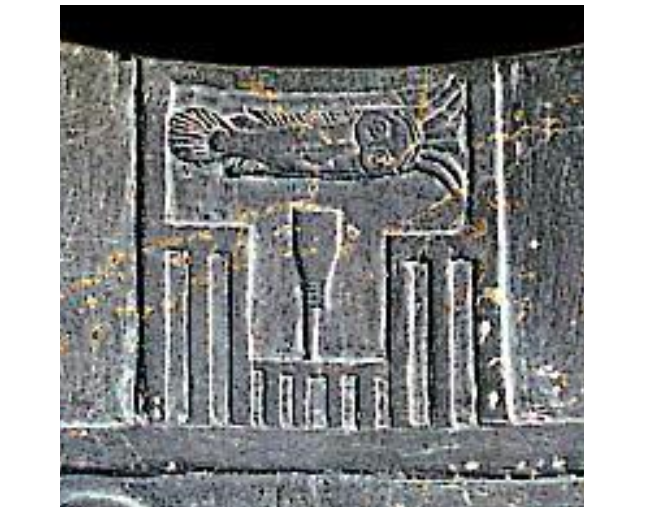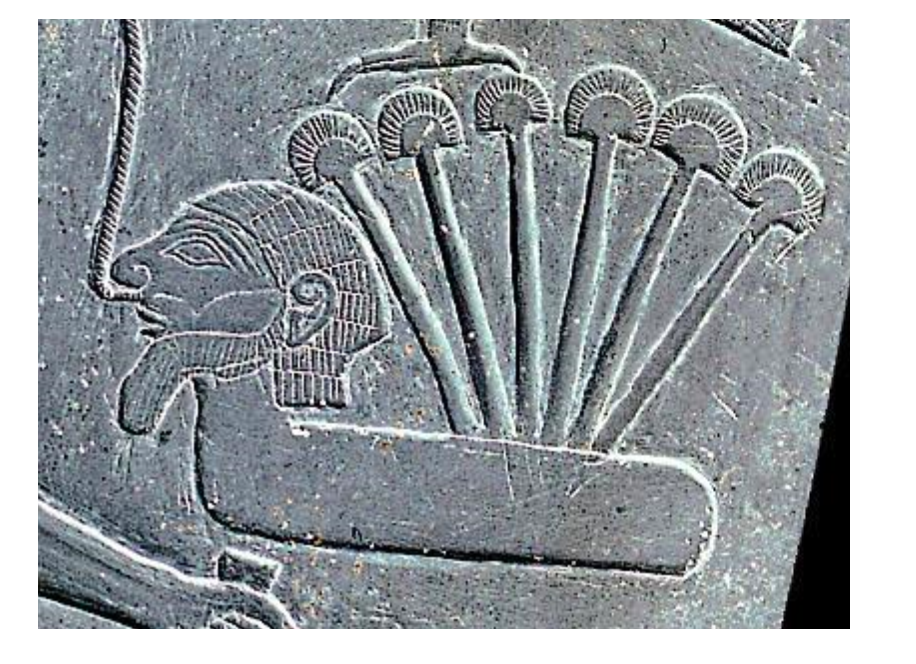ART 112: Exam 1
0.0(0)
Card Sorting
1/194
Earn XP
Description and Tags
Study Analytics
Name | Mastery | Learn | Test | Matching | Spaced |
|---|
No study sessions yet.
195 Terms
1
New cards
Ancient Egyptian civilization was based:
On the southern side of the Mediterranean Sea
2
New cards
What important political event took place in Egypt at the outset of the Early Dynastic period?
Upper and lower Egypt were unified under the rule of a single pharaoh
3
New cards
Which of the following made it possible ancient Egyptians to dedicate a much larger share of their labor supply to the production of art and architecture then was possible in other cultures?
the high fertility of the soil on the banks of the Nile
4
New cards
Which of the following aspects of ancient Egyptian culture can be described as “anagogical?”
The Egyptians strong belief in an afterlife and spirit world
5
New cards
The Palette of King Narmer and the 9/11 firefighters’ memorial are both:
examples of relief sculpture
6
New cards
Which of these words, sometimes used in discussing the medium of a work of art, means “lasting for a short time?”
ephemeral
7
New cards
The shape of the palette of King Narmer mimics the shape of an Egyptian:
makeup compact
8
New cards
The Palette of King Narmer is the earliest surviving:
work of art depicting a namable historical figure
9
New cards
The symbol above appears at the center of the Palette’s upper register. What is it?
A royal insignia bearing Narmer’s name in hieroglyphs

10
New cards
The bowling pin-shaped hat that Narmer wears on the front side of the Palette symbolizes:
Rule over Upper Egypt
11
New cards
What is the term we use for a symbolic object or other visual aspect of a figure in art that enables us to identify the figure?
an iconographic attribute
12
New cards
In the middle register on the front of the Palette, the large figure of Narmer is shown:
Carrying out the ceremonial execution of an enemy ruler
13
New cards
In the middle register on the front of the Palette, the hawk with a human arm represents:
Narmer, in the form of the god Horus
14
New cards
The figure in the image above represents:
The Rule of Lower Egypt, who has been defeated by Narmer

15
New cards
On the back side of the Palette of Narmer, the two beasts with intertwined necks in the middle register probably symbolize:
The unification of Upper and Lower Egypt
16
New cards
What does the subject matter of the Palette of King Narmer have in common with the subject matter of the 9/11 memorial we have been looking at?
both depict victims of violence
17
New cards
What is another name for stylistic analysis?
Formal analysis
18
New cards
Compared to the figures in the 9/11 memorial, the figures in the Palette of King Narmer are:
more abstract
19
New cards
What is the term we use for creating the illusion of three-dimensional space on a two-dimensional surface?
perspective
20
New cards
What is the term we use for the arrangement of forms within a work of art?
composition
21
New cards
When we compared the Palette of King Narmer to photos of suitcases packed with clothes, which of the following stylistic variable were we considering?
composition
22
New cards
we compared the palette of king warmer to an older, pre-dynastic wall paining depicting people, boats, and animals. By comparison to Narmer’s palette, the composition of the pre-dynastic painting appears more:
irregular
23
New cards
The ancient Egyptian word ka refers to:
the spirit of the soul of an individual
24
New cards
the basic concepts with which to begin an analysis of a work of architecture are:
form and function
25
New cards
The main function of the pyramids was that of a:
royal tomb
26
New cards
How tall is the Great Pyramid (Khufu’s)?
481 feet
27
New cards
The Great Pyramid was the world’s largest human-made structure until the period of:
the Middle Ages (c. 1100 AD)
28
New cards
the exterior surface of the pyramids was originally:
highly polished
29
New cards
In what sense can formal qualities of the Great Pyramids be described as ‘analogical’?
the formal qualities symbolize the Egyptian belief in the afterlife
30
New cards
When analyzing the significance of works of religious art, we can talk about the “two Ms’s.” What are the “two M’s”
Morality and Mysticism
31
New cards
Which of the following aspects of the pyramids is most closely connected to moral (as opposed to mystical) dimension of human experience?
the possibility that they were built by slave labor
32
New cards
The smallest of the three pyramids on the Giza plateau belonged to which Pharaoh?
Menkaure
33
New cards
The primary “anagogical” purpose of Menkaure and a Queen was to:
serve as an alternate vessel for pharaoh’s ka
34
New cards
The phrase “one who keeps alive” was used in ancient Egypt to refer to:
sculptors
35
New cards
A “portrait” is an artistic representation of:
A specific person (for example, President Kennedy)
36
New cards
The “body language” of the pose in which Menkaure is depicted expresses a combination of which of these qualities?
freedom of movement and unshakable stability
37
New cards
In the terminology of human facial physiognomy (physical form of the face and its features), the creases between the eyebrows are called:
glabellar lines
38
New cards
compared to the official portraits of the last 45 United States presidents, the facial expression typically seen in Egyptian pharaonic portraiture conveys:
greater detachment from emotional ups and downs and worldly concerns
39
New cards
Where is “Ti Watching a Hippopotamus Hunt” located?
in an Egyptian tomb
40
New cards
Which of the following terms derives from the Greek word meaning “another sense?”
allegory
41
New cards
At the literal level, “Ti Watching a Hippopotamus Hunt” depicts:
An Egyptian royal official hunting on the Nile
42
New cards
At the allegorical level, “Ti Watching a Hippopotamus Hunt,” this work depicts:
the conquest of order over chaos in the universe
43
New cards
Ti’s social status is indicated here by:
the abstract style in which he is depicted
44
New cards
An important contributor to the theory of the relationship between art and social was:
the Marxist revolutionary Leon Trotsky
45
New cards
In “Ti Watching a Hippopotamus Hunt,” the low-class servants at the front of the boat are depicted:
more naturalistically than Ti, the higher class figure
46
New cards
During which period did Sesostris III reign?
Middle period
47
New cards
What important political event took place in Egypt at the start of the Early Dynastic period?
Upper and Lower Egypt were unified for the first time under the rule of a single pharaoh
48
New cards
What important political event took place in Egypt at the outset of the Middle period?
Egypt fell into a period of political instability, the Upper and Lower Egypt became politically separate for the first time since the Early Dynastic period
49
New cards
The face of Sesostris seems too express his
concern about the political turmoil of his times
50
New cards
If we think about the sense of uneasy or anxiety that his portrait of Sesostris could have produced in viewers who lived in Sesostris’s time, which of our three levels of art historical analysis are we considering?
significance
51
New cards
In comparison to creases of Sesostris’s mouth, the creases of his glabellar lines appear:
slightly more abstract
52
New cards
When we notice that Sesostris’s glabellar lines are incised rather than modeled, which of our three levels of art historical analysis are we considering?
Style
53
New cards
The primary function of the Great Temple of Amun at Karnak, like all Egyptian temples, was:
to provide a home on earth for an Egyptian god
54
New cards
The Great Temple of Amun at Karnak temple was dedicated to the god:
Amun
55
New cards
The Great Temple of Amun is an example of what is called a “Pylon temple.” From what does the term ‘Pylon temple’ derive?
from the large gates with sloping slides that divide one section of the temple from another
56
New cards
What is the first thing a person encountered when approaching the Great Temple of Amun?
pylon
57
New cards
What is the point of my comparison between the the Great Temple of Amun and the rides at Disneyland?
both are artificial environments that generate the illusion of being in another place, separate from everyday life
58
New cards
In discussions of the form of a structure, what is meant by “axial?”
the components of the structure are organized along a line
59
New cards
centrality
circular forms
60
New cards
axiality
straight line
61
New cards
the plan of the Great Temple of Amun at Karnak is primarily:
axial
62
New cards
Features of the Egyptian religious belief that first appears in the period of the New Kingdom
belief in life after death expanded to include everyone, not just the pharaoh, his family, and court
\
belief in correlation between behavior in this life and fate in the next one
\
belief in correlation between behavior in this life and fate in the next one
63
New cards
the purpose of the Egyptian Book of the Dead was:
to provide the ka, or soul, of the deceased with guidance and protection in the afterlife
64
New cards
This segment of the Book of the Dead of Hunefer depicts:
Hunefer being judged in the afterlife
65
New cards
How many times does Hunefer appear in the continuous narrative in the lower register of Hunefer scroll?
two
66
New cards
The object in the hand of the falcon-headed god Horus is called?
ankh
67
New cards
The ankh is a hieroglyph that means:
eternal life
68
New cards
In comparing the compositional qualities of the Weighing of the Heart and Judgement of Osiris to the compositional qualities of the prayer translated from an Egyptian Book of the Dead, we notice that:
the composition of the prayer and the image are both formal and repetitious
69
New cards
egyptologists believe that Nefertiti was the mother of which pharaoh?
Tutankhamun
70
New cards
A term for the kind of physical desire that the sight of a beauty face or body can arouse is:
sensual desire
71
New cards
The psychological characteristic conveyed by Nefertiti’s facial expression appears to be:
serene, detached composure
72
New cards
Tutankhaum’s fame in the modern era derives from the fact that:
his is the only pharaonic tomb to have survived to the modern age intact
73
New cards
Tutankhaum reigned during the:
New Kingdom
74
New cards
The headdress that appears on this mask is called a:
nemes
75
New cards
The gold medium of this mask expresses the pharaoh’s:
power and divinity
76
New cards
In comparing the medium of Tutankhamun’s mask with that of the bust of Nerfertiti, one can say that the medium of the gold makes the image of Tutankhamun:
more abstract than the bust of Nefertiti
77
New cards
The cultural revolution in Ancient Greek art, philosophy and politics in which century?
the fifth century BC (500-400 BC)
78
New cards
What is the name of the ancient architectural form represented by the symbol above?
Greek temple front

79
New cards
During the “cultural revolution” of 5th century BC Greece, what important development took place in the political life of Greek society?
The theory and practice of democracy emerged
80
New cards
During the “cultural revolution” of 5th century BC Greece, what important development took place in philosophy?
The Greeks established the principles of free inquiry and skepticism
81
New cards
Which of these did occur in Greece in fifth century BC?
the Athenian statesmen Pericles developed early theories of democracy, which he and other Greeks of his time believed was the best system of government for ensuring personal freedoms
82
New cards
The cultural revolution in Ancient Greek art, philosophy and politics occurred in which century?
The fifth century BC (500-400 BC)
83
New cards
During the fifth century cultural revolution in Greece, important and influential developments took place in:
politics and political theory
philosophy
art and architecture
philosophy
art and architecture
84
New cards
When in relation to the fifth century cultural revolution in Greece, was the Metropolitan Kouros made?
before
85
New cards
In Greek, the term kouros means
young man
86
New cards
This particular kouros figure is called the “Metropolitan” kouros because it is held in:
The Metropolitan Museum in New York City
87
New cards
In ancient Greece, Kouros statues like the Metropolitan Kouros functioned as:
1. Grave markers honoring the deceased
2. Votive Offerings
88
New cards
What is a “votive offering?”
an offering made as part as part of a pledge or prayer to a divine being
89
New cards
Which aspect of the Metropolitan Kouros most clearly shows the influence of the Egyptian sculptural tradition on Greek sculpture in the pre-Classical age?
the figure’s pose
90
New cards
Where does the Metropolitan Kouros stand in relation to Menkaure on the “coverage spectrum?”
the body of the Metropolitan Kouros is less covered than the body of Menkaure
91
New cards
For the ancient Greeks, the male nude body expressed:
strength and virtue
92
New cards
compared with the Egyptian statue of the pharaoh Menkaure, the Metropolitan Kouros is:
more abstract
93
New cards
When, in relation to the fifth century cultural revolution in Greece, was the Anavysos Kouros made?
before
94
New cards
In Ancient Greece, statues like the Anavysos Kouros functioned as:
grave markers honoring the deceased
95
New cards
The inscription at the base of Anavysos Kouros is best described as:
a mournful tribute to the deceased person’s bravery in battle
96
New cards
The Anavysos Kouros is closest to the Egyptian stature of Menkaure with respect to:
its pose
97
New cards
Compared to the Mentropolitan Kouros, the Anavysos Kouros is:
later in date and more naturalistic
98
New cards
When, in relation to the fifth century cultural revolution in Greece, was Polykleitos Doryphoros made?
during
99
New cards
“Dorphorus” means:
spear-bearer
100
New cards
Why are Roman copies of Greek original works of art important?
In many cases, the Greek originals have been lost, and the Roman copies provide the only evidence of what the original Greek works looked like